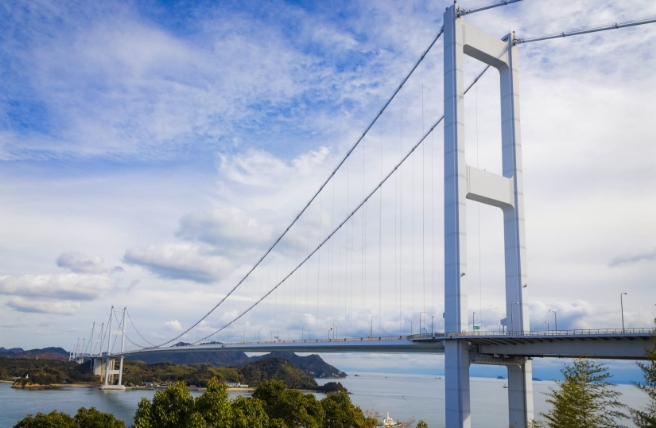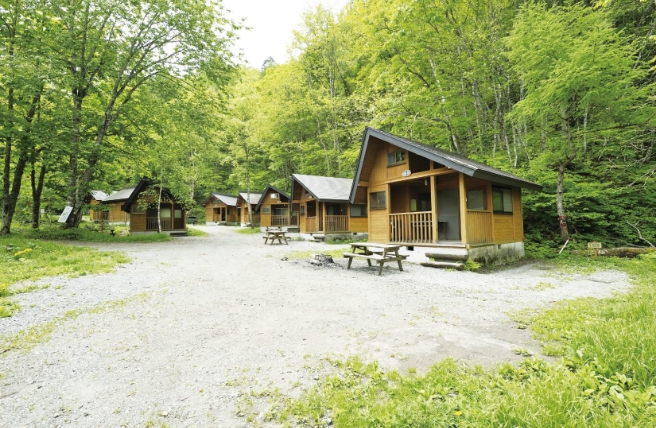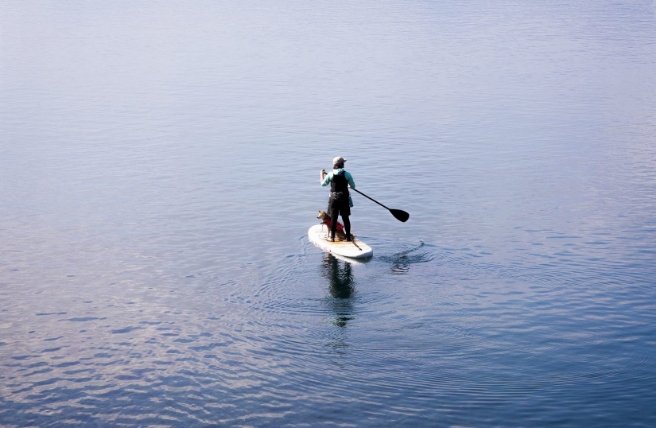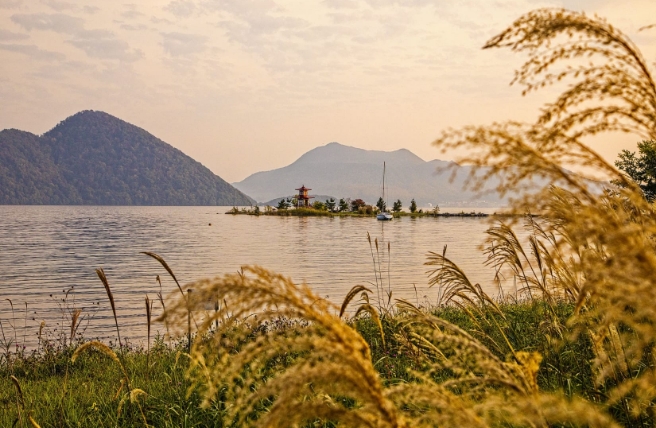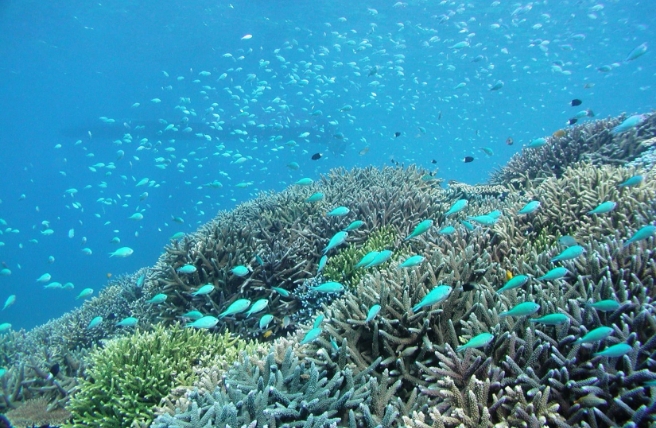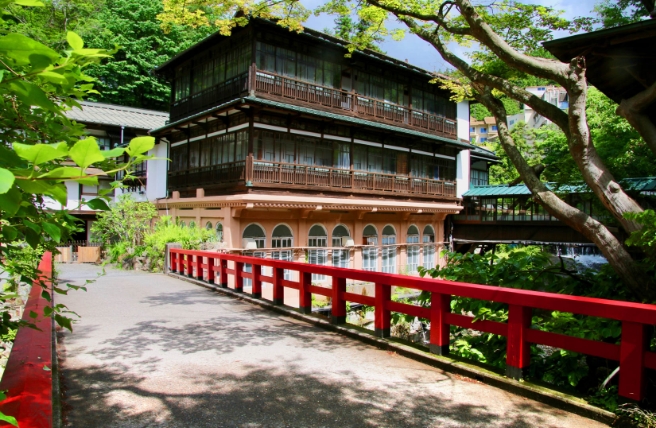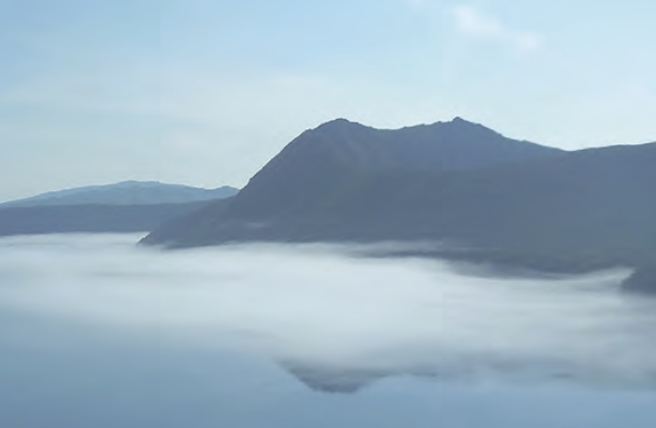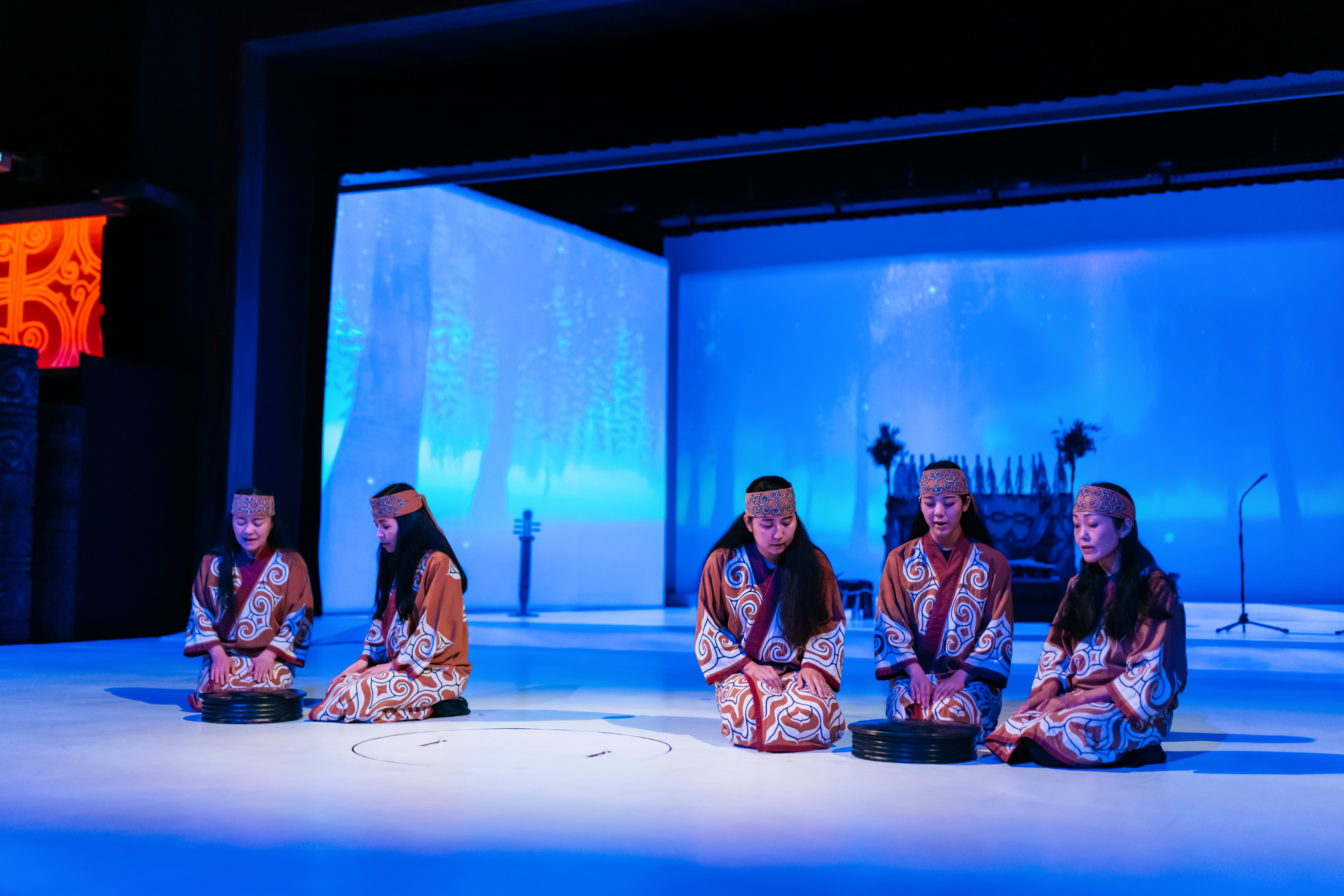
Traditional Ainu performances
The spirit of nature
Ainu believe that spirits reside in everything throughout the natural world and that kamuy (spirit-deities) visit the human world in the form of certain animals and natural phenomena. The kamuy bring gifts such as meats, furs, and other important resources. Ainu worship many aspects of nature as kamuy and perform elaborate worship rituals involving song and dance as a way to give thanks and commune with the kamuy.
The Daisetsuzan mountain range, located within Daisetsuzan National Park in central Hokkaido, is a vast, varied environment of cascading waterfalls, sheer cliffs, deep-cut gorges, wetlands, and lakes. Ainu settlements flourished in the foothills of the mountain range along the Ishikari River, where the people traditionally fished for salmon and trout, and hunted and foraged on the land. Ainu continue to worship the river as a kamuy and refer to the mountain range as Kamuy Mintar, the playground of the gods. Explore these sacred lands by hiking mountain trails, or take the Kurodake Ropeway up Mount Kurodake, one of the northernmost peaks in the Daisetsuzan range. The Sounkyo Visitor Center has information on Daisetsuzan National Park’s wildlife, geography, and hiking trails.

The craggy cliffs of Tenninkyo Gorge in Daisetsuzan National Park
Lake Mashu, located toward the eastern end of Akan-Mashu National Park, is revered by Ainu as Kamuy To (lake of the gods). In clear weather, the deep, crystalline waters of this caldera lake reflect the surrounding mountain scenery. There are three viewing platforms on the rim of the caldera, and early morning hikers are often rewarded with a view of thick fog or low clouds floating over the water. Lake Akan is another caldera lake southwest of Lake Mashu, known for marimo: rare spherical forms of freshwater algae. Akanko Ainu Kotan on the southern shore of Lake Akan is an Ainu settlement where visitors can experience traditional crafts and dance. At the Akanko Ainu Theater Ikor, enjoy dance, song, and ritual performances and learn how these are used to commune with kamuy. From summer through late autumn, visitors can explore the forest around Lake Akan and learn ancient Ainu stories at Kamuy Lumina, an immersive night walk.
The varied terrain of Shiretoko National Park in eastern Hokkaido includes scenic lakes, volcanic mountain ranges, and coastal waters with seasonal drift ice. Ainu revere many of the animals that inhabit the diverse Shiretoko Peninsula as kamuy, such as the brown bear (Kim-un-kamuy, god of the mountains); the orca (Repun Kamuy, god of the sea); and Blakiston’s fish owl (Cikap-kamuy or Kotan-kor-kamuy, god of the village). The coastal waters of the peninsula are home to a wide range of marine species, including several species of salmon—which Ainu call Kamuy-cep (fish of the gods). In autumn, when the salmon return from the sea to the rivers of Shiretoko, Ainu hold ceremonies to celebrate their return and pray for abundant catches. Visit the Shiretoko World Heritage Conservation Center to learn more about Shiretoko’s natural environment and wildlife.
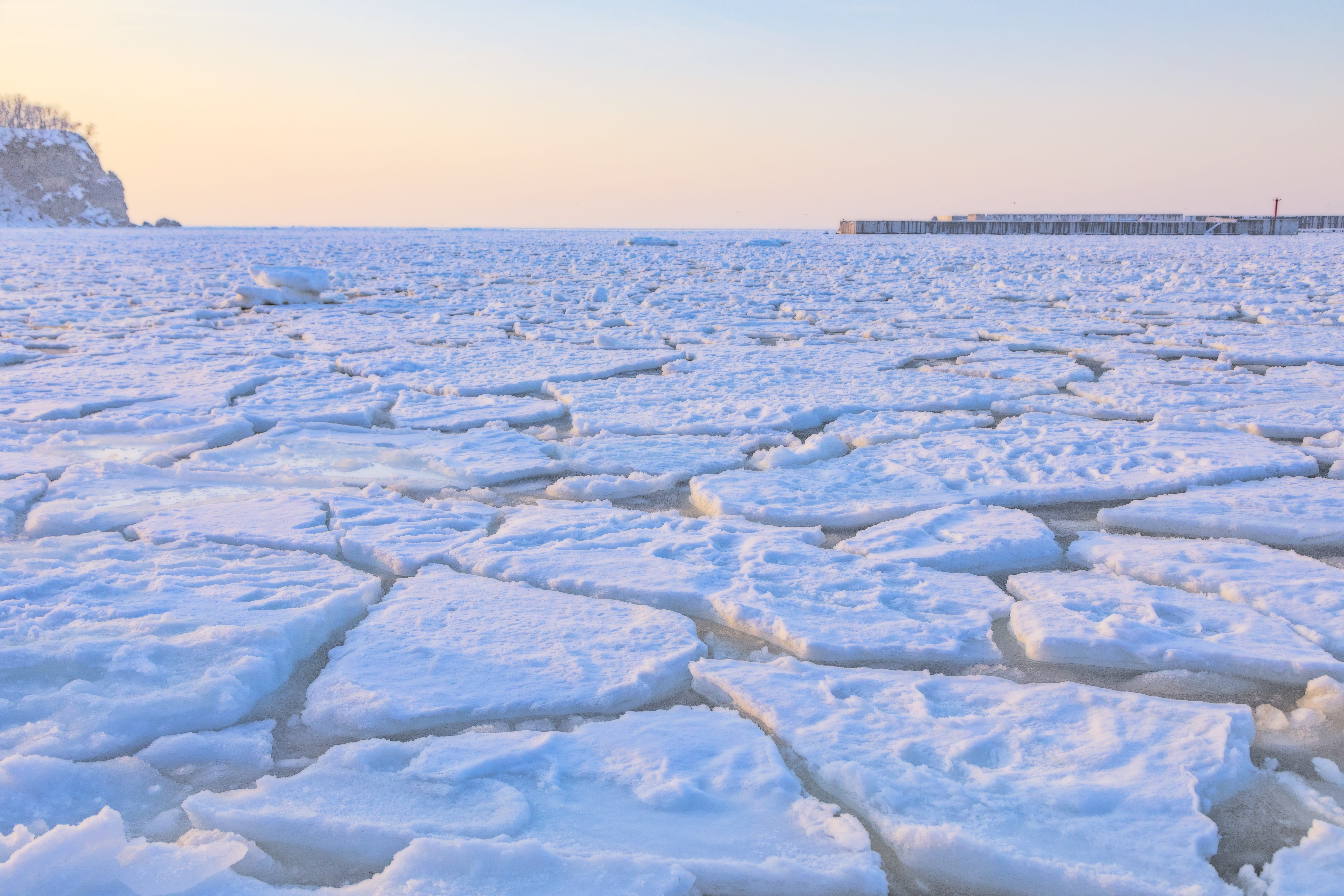
Drift ice along the coast of Shiretoko National Park
Coexisting with nature and kamuy
Ainu historically settled near lakes and rivers and along the coasts of Hokkaido, in kotan, small villages comprising a few dozen families. Homes (cise) were built out of wood or woven reed mats that were bound without nails. A traditional Ainu house typically had one or two rooms—depending on the size of the family. At the center of the home was a hearth for cooking, and a window near the hearth called the Kamuy Puyar (god window) was made for kamuy to enter and leave the home. Ainu villages generally featured a cluster of houses, outhouses divided by gender, sheds for hunting equipment and tools, and an outdoor altar (nusasan) made of woven cattail. The Ainu Living Memorial Hall Poncise, located within Akanko Ainu Kotan in Akan-Mashu National Park is a recreation of a traditional Ainu home. Step inside to see tools and traditional clothing, or take a tour led by an Ainu guide to learn more about the traditional Ainu way of life.

Lake Akan
Before the development of Hokkaido in the late nineteenth and twentieth centuries, Ainu fished, hunted, and foraged, and traded with one another along Hokkaido’s waterways. Surrounded by forests, lakes, rivers and the sea, they were well supported by the natural environment. They hunted deer, brown bears, raccoons, squirrels and rabbits, and fished for salmon, trout, and dolly varden. Salmon were caught as they traveled upriver, and as they migrated through the freezing waters of the Sea of Okhotsk. Along with more familiar preservation methods such as smoking, Ainu used the natural climate to aid preservation. Ryube is a traditional Ainu dish prepared by hanging and freezing salmon outside, then slicing it to enjoy raw as a frozen sashimi. There are restaurants in Akanko Ainu Kotan that serve ryube. Stop by the Shiretoko Rausu Visitor Center or the Shiretoko World Heritage Rusa Field House to see wildlife displays and learn more about Ainu hunting traditions.

Stop at visitor centers in the park for practical, cultural, and environmental information
When Ainu hunted and fished, nothing was wasted. They thanked the kamuy for the gifts they bestowed, and made use of everything, especially skins and furs which were traded and used to make clothing. Ainu in coastal areas dried salmon and trout skins like leather, which they stitched together into long robe-like garments. Inland communities used the hides and furs of bears, foxes, and deer to make vests and boots. Robes called attush were woven from a bark-fiber thread made from the bark of the Manchurian elm tree or from linden trees. Men collected the bark, which women worked into thread and wove into cloth and decorated with protective designs. Traditional attush robes are displayed at Akanko Ainu Kotan, and at the Kussharo Kotan Ainu Folklore Museum. Ainu robes and clothing for ceremonial occasions are often adorned with patterns such as Moreu (spirals) and Aiushi (thorn patterns). These motifs vary from region to region and were used like amulets, for special purposes such as to ward off evil spirits.
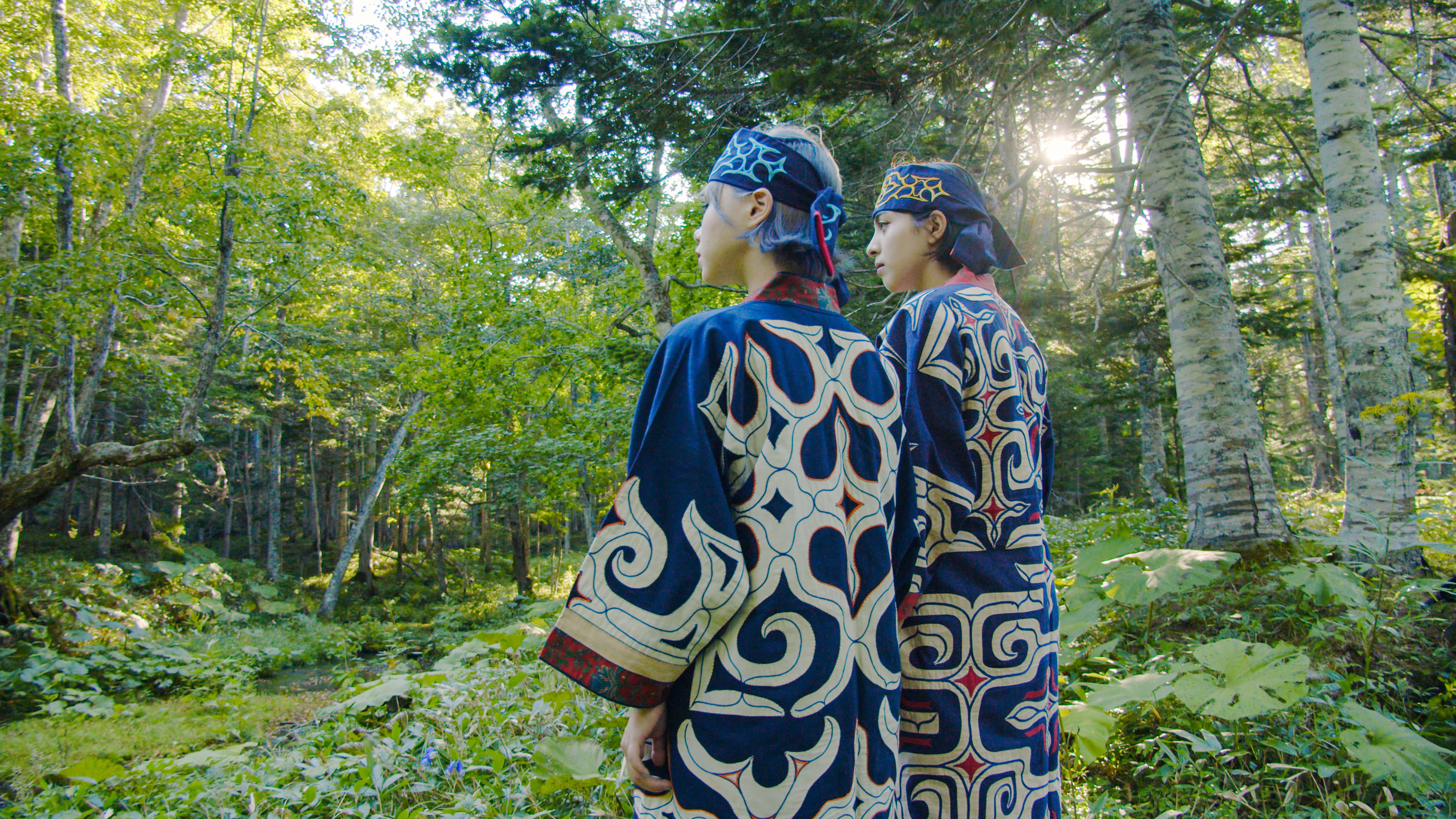
Traditional Ainu clothing
Travel and trade
Trade was a central part of the traditional Ainu way of life, and contributed significantly to the development of Ainu culture. Communities traded with one another, using dugout boats to navigate Hokkaido’s waterways. Ainu living in the foothills of the Daisetsuzan mountain range traded goods such as salmon and bear fur along the Ishikari River, which ran west into the Sea of Japan. On their journeys downstream, they would pray to the gods for protection at Kamuy Kotan—a section of the river with treacherous, fast-flowing waters and jutting rock formations. Ainu also traded with the inhabitants of mainland Japan (Honshu)—exchanging sea otter fur, salmon, and algae for rice, cotton, and sake. Visit the Higashitaisetsu Nature Center to see displays of the tools Kamikawa Ainu used for hunting and fishing, or hike along the Ishikari River for a sense of the journeys undertaken by Ainu traders.
Historical records indicate that the Ainu also traded overseas, along the Sea of Okhotsk—exporting natural resources such as fur and brown bear gallbladder and importing lacquerware and clothing made from silk. Ainu trading posts were an important link in international trading routes, and facilitated the trade of precious commodities to neighboring regions. Enjoy a cliffside walk along the Sea of Okhotsk for seaside views of where the Ainu sailed.

Mount Asahidake, Daisetsuzan mountain range

